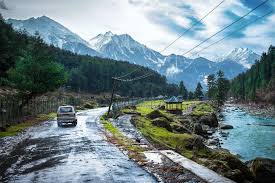Bhavneet Singh
It has been more than a year since the article 370 and 35A has been scrapped. It was a move to put Jammu and Kashmir in equal status with rest of the country. The rights and privileges enjoyed by every Indian citizen were extended to the people of Jammu and Kashmir. Since the abrogation of the article, the govt is striving for a smooth integration process and ensuring all round development in multiple sectors.
Panchayat Raj

The most important facet responsible for ensuring this all round development is election and functioning of local bodies or the ‘Panchayat’. Under the Jammu and Kashmir Panchayat Act, the process of establishing three tiers of grassroots level democracy will begin in the early December. It is a heartening state to see 350 nominations been filed for 43 seats going to polls. 196 nomination were received from Kupwara district, the most in Jammu and Kashmir, with candidate aspiring for the DDC polls and vacant seats of Sarpanch and Panch constituencies. Similar enthusiasm was witnessed for Srinagar Municipal Council, which goes to polls in January next year, received 21 nominations for two wards. The Indian Panchayat has stood the test of time and without a doubt, it will form the backbone of development in the region.
“When the Panchayat Raj is established, public opinion will do what violence can never do”.
Mahatma Gandhi
Industrial Growth
The world is at the cusp of fourth industrial revolution. With the formation of Board of Revenue and Industrial Development Corporation (IDC), the growth of industries is now been streamlined. The IDC will take over the industrial estates, including their land and asset development and management in the union territory of Jammu and Kashmir, both in terms of value addition and in creating employment opportunities. The MSMEs will also benefit from the large investments flowing into the market. A Market intervention Schemes (MIS) has been jointly launched by the central govt and the Jammu and Kashmir government to increase the production in horticulture. GI (Geographical Indicator) tag is awarded to the Kashmiri saffron to promote it on the global level. Currently a project of Rs 411 crore is underway at Pampore under the National Mission on Saffron (NMS).
Healthcare
Currently, 97 percent of the states healthcare needs are met by public health institute. The State Administrative Council (SAC) is envisaging Rs 2000 crore investment in private sector for building modern healthcare institutions. The investment policy gives the investors a 30 percent subsidy on capital investment for setting up of multi-specialty and super specialty hospitals. With many investors eager to invest in this untapped sector, the healthcare system is bound in improve. To improve the state of commute in Srinagar and Jammu, a metro rail project has been approved by the central government, cost of which is Rs 10,599 crore. The metro will volte face both the cities.
Tourism
The tourism contributes about seven percent of GDP of Jammu and Kashmir. The comprehensive Mansar Rejuvenation and Development Plan will put mansard on world tourism map. The villages surrounding Mansa lake will get a socio-economic upliftment with increased footfall per annum. Water based tourism is developed at Pull Doda, Baghliar and Ranjit Sagar Dam at the cost of Rs 6.83 crore. Besides, a light and sound show is being set up at Bagh-e-Bahu at the cost of Rs 10.82 crore. Such implementation will increase the tourist influx, bolstering the tourism economy which has suffered due to COVID-19.
Hydro Power Projects
The government is also working on hydropower projects and distribution in power sector. The state has the potential to generate 20,000 MW of hydropower. Efforts are put to operationalize Pakul and Kiru hydroelectric power project on a fast track basis. The Kishanganga hydroelectric plant (330MW) in Bandipora district has been operation since May 2019. Power is equal to prosperity and the state will soon reap its benefits. Similarly, the first stage of Jhelum Flood Mitigation project has been completed, resulting in an enhancement of carrying capacity of the river by 10,000 cusecs. The second stage is under progress and it will enhance this capacity by further 15,000 cusecs. This instrumental project will minimize the chance of floods and avert 2014 like catastrophe.
Conclusion
For two generations, the voice of people of Kashmir was suppressed by social and political injustice and now is the time to strengthen this voice by structured opportunity.
Development is materializing on ground after the special status of the state was removed and it is for all to witness. The Kashmir got true independence and now the people will taste the fruits of total development. For two generations, the voice of people of Kashmir was suppressed by social and political injustice and now is the time to strengthen this voice by structured opportunity. The time has arrived for the Kashmiri youth to dream big to pursue ambitions and be satisfied. It is a matter of huge gratification that Kashmir valley is thriving as the other states of India in the 21th century.




Comments